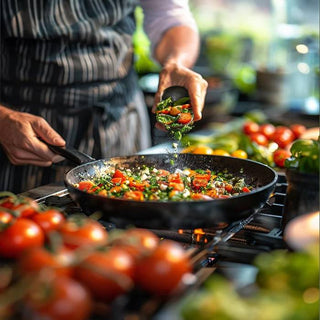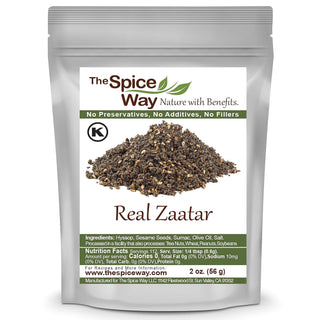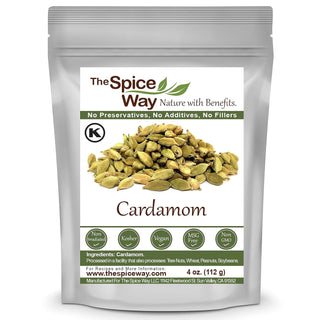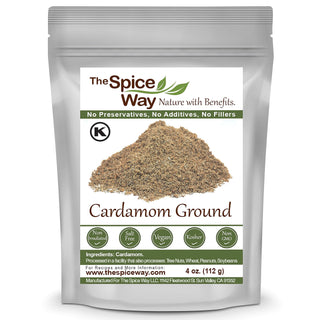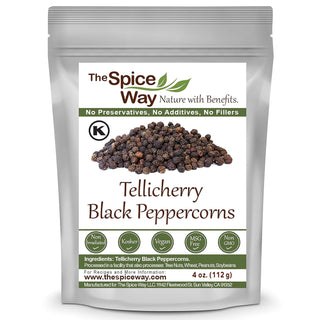Flavors are the crux of any culinary creation, and knowing how to balance them is the secret sauce behind making your dishes taste phenomenal. By mastering this art of balancing flavors, you can transform a dish from bland to marvelous in a jiffy. In this article, we will explore the various ways of harmonizing flavors and help you rethink the way you approach cooking.
1. Understand the basic tastes
First things first—get a good understanding of the 5 basic tastes: sweet, sour, salty, bitter, and umami. Each of these tastes has a pivotal role in creating a well-balanced recipe. Whenever you're cooking a new dish, experiment with different ingredients that represent these tastes (e.g. sugar, jaggery, maple syrup, or honey for sweetness, citrus fruits for sourness, salt or soy sauce for saltiness, dark chocolate or coffee for bitterness, and mushrooms for umami), and adjust their proportions as required to suit your taste buds. Once you grasp the impact each of these tastes has on your culinary creation, you'll be better equipped to balance flavors and make any dish taste amazing.
2. Create contrast
Be it a sweet dish or a savory one, you cannot make it stand out unless you contrast the dominant taste with a different one. For instance, if you're cooking a creamy dish rich in flavors, it'll be a great idea to infuse a touch of acidity into it, such as squeezing a bit of fresh lemon juice. This contrasting taste breaks the monotony and adds depth and complexity of flavors—just what you need to elevate your dishes. In a similar way, you can pair spicy tastes with a hint of sweetness to create balance. Keep experimenting with this idea and you’ll soon be a pro at cooking well-rounded dishes.
3. Use herbs and spices
When we are talking about balancing flavors, we cannot emphasize enough the difference herbs and spices can make in your dishes. Be it herbs such as basil, parsley, and cilantro or spices like turmeric, cumin, cardamom, and paprika, they are excellent at introducing warmth and depth to your recipes, giving them a new dimension. But be mindful while using herbs and spices, as some can be overwhelming and can alter the taste of your dish. Use them in moderation to bring about their real magic.
4. Don’t forget the texture
The art of balancing flavors goes beyond the taste—texture plays a crucial part too. When a dish has a dominant texture, it’s always a good idea to balance it out with different textures to create a rounded experience for the person enjoying the dish. For instance, if your dish is creamy and soft, you can balance it out by offering something crunchy to complement it, such as roasted nuts sprinkled on top.
5. Make adjustments on the go
During the cooking process, don’t hesitate to have a taste of your dish to ensure all the flavors are well-balanced. The more you experiment with new dishes, the more experience you’ll gain, and your palate will become more developed. If you find some flavors are not as potent as you want them to be, you can make adjustments on the go to achieve the perfect balance. Start with a small amount of seasoning and gradually build up. It's easier to add more seasoning later than to fix an overly seasoned dish. By adding seasonings gradually, you have better control over the final flavor profile.
6. Consider cultural flavor profiles
Different cultures have their own unique flavor profiles, and exploring them can provide inspiration for balancing flavors in your cooking. Experiment with ingredients and techniques from various cuisines to expand your flavor repertoire. For example, Thai cuisine often balances spicy, sour, sweet, and salty flavors, while Indian cuisine is known for its intricate spice blends.
7. Final thoughts
When you’re creating your culinary masterpiece, always remember that it’s not necessary to strictly follow particular recipes to achieve a beautiful balance of flavors, rather it’s about being intuitive, innovative, and experimental. Follow these tips and we’re sure you’ll soon become an expert!


